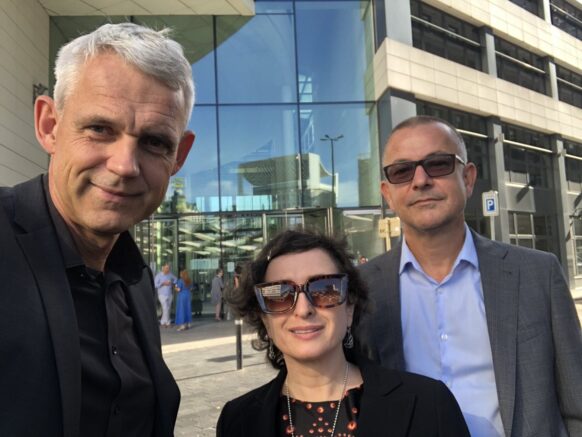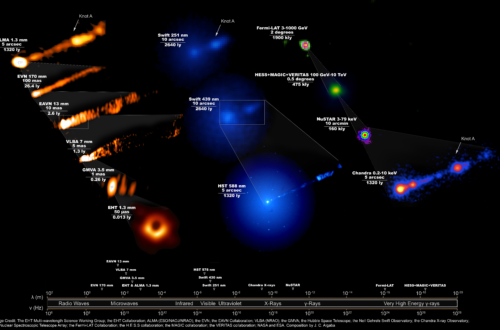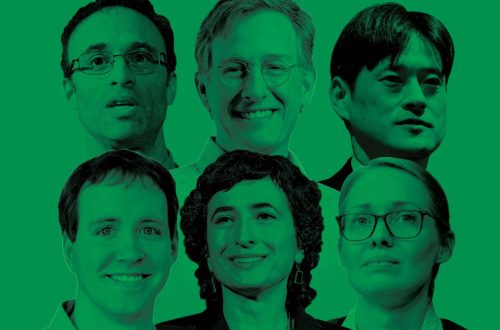First, the new news
It’s the start of a new year so of course I made a bunch of resolutions that likely won’t stick, but one of them was to start doing more research blogging on our site, and to encourage my group to do better here too, after a longish hiatus. Why the hiatus? At least from my side I guess the fallout from the pandemic has been a slow burn that just drags on. While in 2020-2021 we were in total crisis mode at the university, in terms of switching courses to online, trying to support students and colleagues and just generally trying to keep up morale, by 2022 everything was supposedly “back to normal” but I was running on fumes. Between teaching/developing two new courses, I was also helping crunch to get the first results of our Galaxy’s own supermassive black hole out from the Event Horizon Telescope (EHT), visiting the Black Hole Initiative with my group at Harvard University for a month, starting up conference travel again, helping members of my group to graduate and get jobs, and all the time applying nonstop for grants to keep the group going into the future. I found I didn’t have much energy for extra things, particularly social media, so it’s been a pretty quiet year online for me.
But…to fulfil my resolution about more blog posts, I get to kick off the year by sharing some good news! Just before the holidays (actually on 5 December, the Dutch holiday when Sinterklaas brings presents) we found out that the big grant application we had worked on for almost a year got funded! The Synergy Grant from the European Research Council (ERC), is actually the largest personal science grant one can get in Europe, at 10-14M€. It is awarded to 2-4 PIs and in our case there’s three of us: me, Heino Falcke from Radboud University in Nijmegen, and Rob Fender from Oxford University. Together with our partners at University of Namibia we will expand the EHT with a new 15m dish there, to both increase EHT’s capabilities, but also to use the dish on its own to study black hole transients and supermassive black hole variability, together with other multi-wavelength facilities. The name of our grant is “BlackHolistic”, because the end goal will be a more “holistic” understanding of black holes. Starting officially in Fall 2023, BlackHolistic will span six years, and we’ll each be hiring several PhD students and postdocs, so if you’re interested in getting involved, please apply to join the team (ads will always be posted on our websites and at the AAS Job register)!!

A personal story about career strategy
But although that’s already a lot to say, the real story I wanted to share is on a more personal note. The punchline is the hopeful message that you really can make a viable career strategy out of staying true to yourself, and working with people you like. In fact, I don’t think I’d be here today if I hadn’t.
We’ve been rocked as a field (and academia as whole) with bullying and harassment scandals over the last years, and there has been a lot of soul-searching as to what about academia creates an environment where such toxic behaviour thrives. IMHO, I think one of the biggest offenders is the false narrative that the best science is done by lone geniuses (it almost never turns out to be true). This narrative is maintained by a system where most of the big prizes go to at most a few people, although the work is increasingly done by large collaborations (a lovely exception is the Breakthrough Prize, which the EHT won and which was divided equally among all team members, thanks guys!!). But as one becomes more senior, the large research funding grants are also often given to individuals, creating even more hierarchy and something referred to as the Matthew Effect (“Mattheuseffect” in Dutch). Basically once you get one big grant, you increase your chances of getting another because you’ve had more money, more resources and more group members to help you increase your research output.
I have chased these big personal grants, and sometimes even achieved them, more as a matter of necessity than because I wanted so much funding at one time. I would actually far rather work with a multiple-PI team, even if that means I get less for my own group, but there are not many channels for this because of the emphasis on individual-led science. So during 2021 while the pandemic was ongoing, I was doing quite a bit of soul-searching, as the last grant I had from the Dutch Research Council (NWO) was coming to an end in 2022 and I knew I needed to apply for “the next big thing”. But I found that my heart wasn’t really in it and I was procrastinating.
Around this time Heino approached me to see if I might be interested in applying for one of these ERC Synergy team grants. I was a bit hesitant at first, mainly because I have tried to live by several rules in my career, one of the main ones being that I only want to work with people I like and trust. That applied to Heino, but I was worried about who the other PI or PIs might be, and did not know if I wanted to commit to working so closely for 6 years (plus a year of preparation) with someone I either disliked or was on the fence about.
I have good reasons for feeling this way. I had a terrible experience with my PhD advisor that almost led to my quitting the field. But thanks to the support of a couple mentors I ended up washing up on the shores of Germany with an independent Humboldt Foundation research fellowship, and the modest intention of just learning German and surfing the web for a few months, until they found me out and sent me home packing. Not kidding. But after a few months I found myself starting to be curious about science again, and part of the reason was because of working with Heino and Rob!
Heino was junior faculty when I arrived at the Max Planck Institute for Radio Astronomy, where my fellowship host was Heino’s former PhD advisor, Prof. Peter Biermann. I had been studying astroparticle physics, specifically how high-energy particles like cosmic rays interact with other particles and create secondary particles in a cascade, and then all these particles do fun things and make light that we detect. Heino had been working on more fluid dynamical models of plasma flows ejected from just outside the event horizon of black holes, called jets. We decided to combine our approaches to make the first jet model to explain not only the radio emission, but also the newly discovered flaring X-ray emission, from our Galactic centre’s supermassive black hole, Sgr A*. Around this time Heino met Rob somewhere, and Rob was leading the efforts to understand jets in small black holes that form at the end of massive stars’ lives, in binaries, called X-ray binaries (XRBs). He brought Heino’s attention to the first ever simultaneous (important because these objects vary on short timescales) multiwavelength data set from an XRB and asked if we wanted to see if the same model for supermassive black holes could apply to a small one. This was in 2001 I think, and so I headed by train to University of Amsterdam for the first time to meet Rob, who was faculty there at the time, to work on this project. Together the three of us wrote a paper about this XRB, XTE J1118+480, that was controversial at the time, but ended up being one of our most cited papers. We wrote one more small author list paper together and since then, have not worked directly together as a team, though we’ve been part of larger collaborations and I’ve worked on smaller projects with Heino and Rob individually.
While this collaboration was fruitful for all of us, it was critical for keeping me in science. It pulled me out of a dark place, and reminded me that science was fun, especially (probably only) if you work with a good group of collaborators. For Heino and me, it also led to the discovery of a scaling relationship between the emission properties of small and supermassive black holes, that Rob also worked on with his group later. Our projects also taught me that if your work is controversial it often means you’re on to something, which is a lesson I’ve tried to pass on to my own group. Finally this project was what first brought me to Amsterdam for research, where I fell in love with the city and institute, and never dreamed that I would end up here as faculty one day.
Bringing the band back together: punchline
Anyway, fast forward 20 odd years. We’ve all been working in our respective spheres, and those spheres have been coming more into alignment again, this time because of the EHT. Heino and I were original members, and Rob recently joined as the prospects for using EHT to study transients and smaller black holes is starting to be possible. Rob and I have both also been working as part of the next-gen (ngEHT) design study. So when Heino and I discussed possible PIs for the Synergy grant, Rob’s name came up, and something just clicked in place and I realised in that moment that this was exactly the way I wanted to go at this stage. Instead of doing my own thing, I would get to work with a larger team of young folk, guided by the three of us, where we could achieve much more together than we could individually, i.e. a real synergy. Also in general I have found that when something feels right, things generally go well because you’re not wasting a lot of energy in conflict or stressing out. So although the process of writing the grant was lengthy and sometimes nerve-wracking because of the deadlines, the process of meeting with Heino and Rob to just brainstorm and develop our ideas was not only fun but felt natural, and basically just flowed. And to be honest, I have only ever felt that way about scientific projects when I am enjoying the process and people, so it’s a deliberate strategy but frankly I think it’s actually the only strategy that makes sense. Chasing fame or recognition is not generally going to lead to creative science and enjoyment, and you only live once. I have done reasonably well in the field (against the odds and no one is more surprised than me), but I credit that to my deliberate choice to follow that sense of flow, follow my intuition, and to try to live true to ideals that I hold important, like treating people well and not tolerating toxicity in my relationships, in social as well as work life. Of course you can’t always avoid toxic people, but by working closely with people that aren’t like that, you can tilt the balance so that your daily experience is more positive than not. And yeah, try to do some good in the world.
This has gone on far too long but the point is, every time I have doubted myself or my ability to stay in the field, I’ve generally made choices that emphasise collaboration and things I find interesting, often at the expense of things that would bring me more individual credit. And I think my science, and my mental health is the better for it. The Universe seems to agree so far, and the fact that our Synergy grant was successful was due, I think, to the fact that we weren’t trying to sell a false narrative, but that we honestly do have great synergy as a team and are excited to work together on these projects.
So for those few of you who had the stamina to read this far, if there is any moral to the story it is that we don’t have to buy into myths about lone geniuses (but if you are one, by all means go ahead and work alone, just don’t be a douche about it!), and can do great science with great people, and still be successful. And I think that shifting the field away from glorifying self-glorification, also via our own choices, is the best strategy for changing academia to be a good place to be for all sorts of people, not just the storied few.



